You can tell that your ZZ plant is dying if it displays symptoms including yellowing leaves, brown leaf tips or stems, black spots on stems, stems that are bending and slow or poor growth. This article will explore these top causes of ZZ plant death as well as what you can do to solve each one.
This article will explore the top ways to know that your ZZ plant might be dying and what you can do to save it. Each sign is a good reason to act quickly to save your ZZ plant.
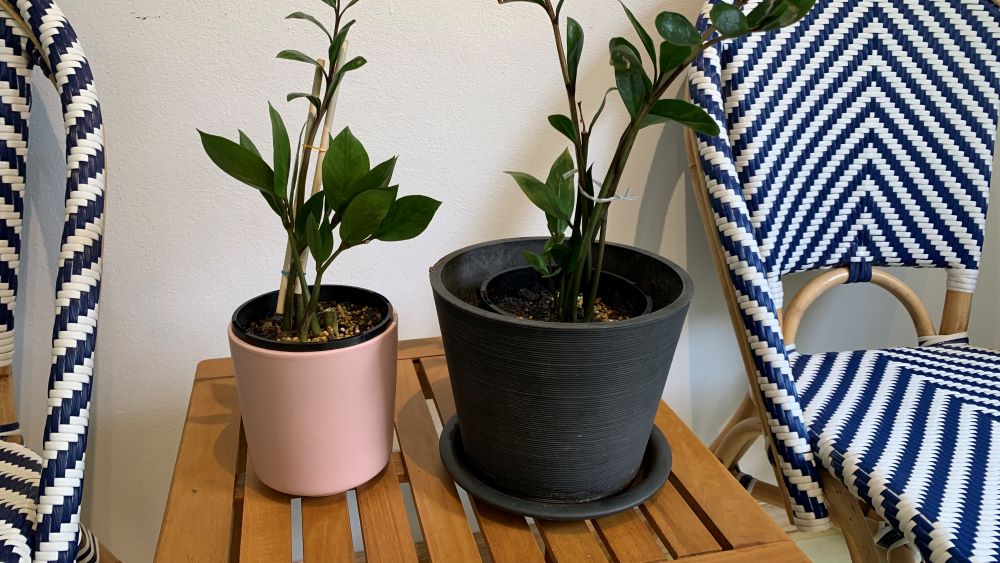
Top signs that your ZZ plant is dying
Here are the top signs and symptoms to look for to tell that your ZZ plant is dying as well as what you should do about each one.
Yellowing leaves
Yellowing leaves on a ZZ plant are a sign that your ZZ plant might be dying due to a lack of nitrogen. Nitrogen is the key nutrient needed to help the plant to develop chlorophyll in its leaves to photosynthesize and to make its own energy.
Yellowing leaves often occur if the potting soil has run out of nutrients, if the plant is overwatered or if the plant is not fertilized frequently enough.

Solution
To solve this problem give the plant a dose of liquid fertilizer that contains a good amount of nitrogen. After 2 weeks add a teaspoon of slow release indoor plant food and water it in well. Slow your watering schedule to once every 4 weeks and your plant should recover.
For more details on treating yellowing leaves on ZZ plant, check out my previous article: ZZ Plant has yellow leaves after repotting | 8 Causes + Solutions
Brown leaves
Brown leaves are another sign that your ZZ plant may be dying. Brown leaves are most commonly caused by underwatering and allowing the rhizome to dry out too much. While the ZZ plant is drought hardy, they can dry out too much and develop brown leaves.
You may also notice bending stems as the plant does not have enough water to strengthen and hold the stems straight.
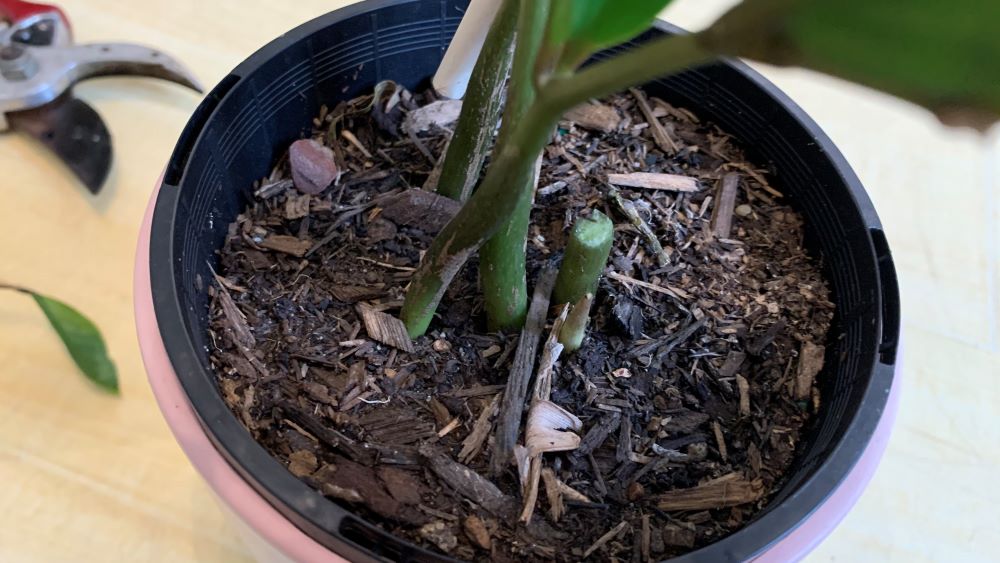
Solution
To solve this problem deeply water your ZZ plant. Thoroughly wet the soil all across the surface until you see water come out of the drainage holes. Allow the plan to drain well in a sink or outdoor until there are no more drips.
Thoroughly watering the ZZ plant every 4 weeks is important to prevent the bulbs or rhizomes from drying out too much.
Black spots on stems
Black spots on stems can be a sign that your ZZ plant is in distress. These are caused most commonly by overwatering as the stem takes in too much water and becomes damaged. Overwatering can also cause damage to the rhizomes and roots stopping the plant from absorbing nutrients and water.
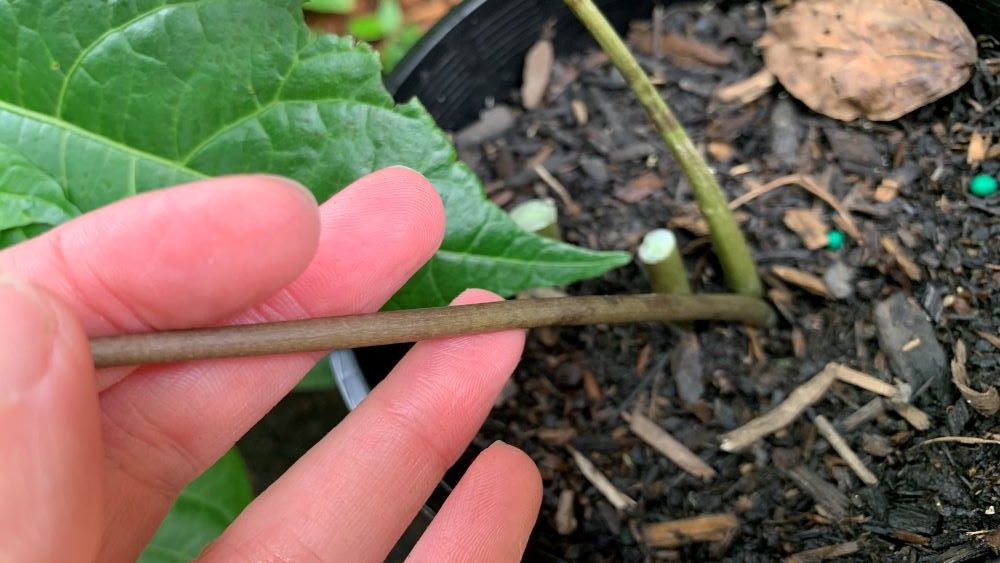
Solution
To solve the problem of black spots on ZZ plant stems slow down your watering schedule to once every 4 weeks. Add some slow release fertilizer in spring and fall to replace any lost nutrients and always make sure the plant is not sitting in water in the tray or the bottom of a self-watering pot.
For more on treating black spots on ZZ plant stems check out my previous article here: Black spots on ZZ plant stems | How to solve this problem
Wrinkled bulbs or rhizomes
When you repot your ZZ plants you may notice that you have wrinkled bulbs on the base of your plant. These bulbs help the plant to store water and nutrients and can become damaged if the plant is over or underwatered.
If the plant is overwatered the bulbs can wrinkle and form black spots as the bulbs rot in the ground. Equally if the plant is underwatered the bulb will dry and wrinkle and become damaged.

Solution
ZZ plants can be saved if they are repotted into premium potting soil and watered only once to allow the soil to settle in around the roots. Leave the plant for 4 weeks before watering again to avoid overwatering. Add some slow release fertilizer in spring and fall and your plant will be happy.
For more on treating the problem of wrinkled bulbs on ZZ plants read my previous article: Why ZZ plant bulbs get wrinkled | What to do to save your plant
Bending stems
Bending stems on ZZ plants can be a sign that the plant has a problem. Stems can bend away from direct sunlight, or bend over if the plant is lacking water. The stems can also bend if the plant is overwatered or can bend over when the plant is repotted.
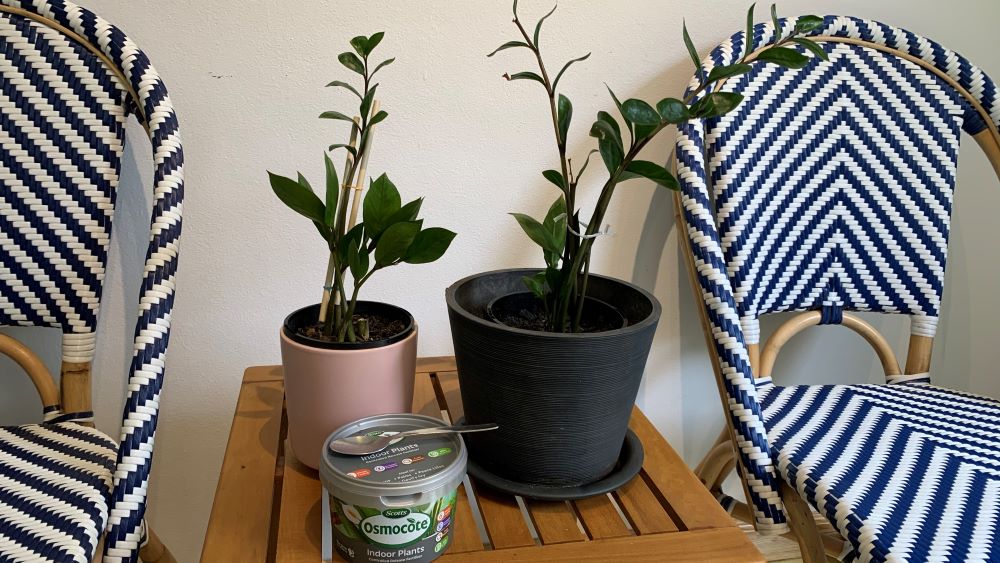
Solution
Bending stems can be a sign of many problems but working out if you are over or underwatering is a good start. If the soil feels moist 2 inches down it is likely the plant has enough water. If it is dry, deep water the plant and move it into a space out of direct sunlight
For newly potted ZZ plants where the stem is bending after transplant you can support them temporarily using twist ties or bamboo straws.
For more on dealing with bending stems on ZZ plants check out my previous article: How to remove dead ZZ plant stems | Easy pruning guide
Slow or poor growth
Slow growth on ZZ plants can be a sign that the plant is not happy. While I have found that ZZ plants grow relatively slow, you should see new stems in spring and see the original stems lengthen out. If you notice your plant is not growing at all you may need to take some action to save it.

Solution
To save a plant that has stopped growing or is growing really slowly it is hard to tell it might be time to repot it. Once ZZ plants have filled their pot and become pot bound they will run out of nutrients, the soil can become hydrophobic and they will be ready for more space.
If you want to repot the whole plant into a new pot, choose one that is 1-2 inches wider and deeper than the original. Use good quality potting soil and water it in well.
You can also split your ZZ plant by carefully splitting the rhizomes. I like to pull mine apart where they naturally divide and come apart without cutting. You can plant each piece in a new pot with new soil. This will give the plant more room and more nutrients to grow fast.
For more on repotting ZZ plants, check out this article: How to divide a ZZ plant | Easy 8 Step Guide
How to keep a ZZ plant healthy
Here are my top 5 tips to keep your ZZ plant healthy
- Apply a slow release indoor plant fertilizer twice per year in spring and fall.
- Choose good quality potting soil when repotting that contains a fertilizer and is rich in organic matter.
- Place your ZZ plant in a position that gets protection from direct sunlight.
- Plant ZZ plants into pots with good drainage and at least 5 drainage holes. Place the pot inside an indoor pot to catch the drips.
- Repot your ZZ plant every 2-3 years to give it more room to grow. Divide the plant if you want to and give it more room to grow.
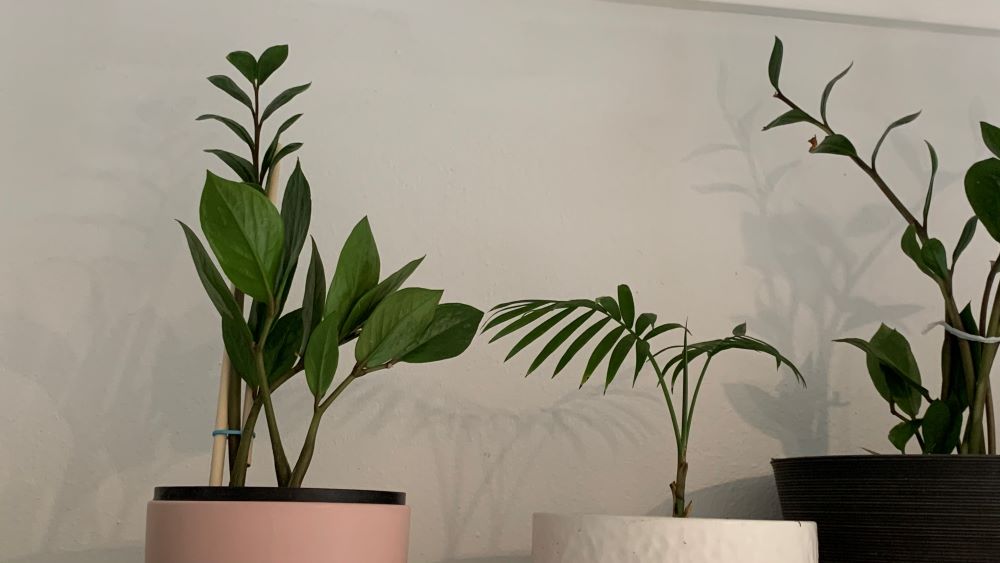
How to know when a ZZ plant is dying | Summary
ZZ plants will show symptoms that they are dying by turning black on the stems, yellow on their leaves, brown leaf edges or drooping stems. There are lots of ways to solve these problems but the first step it to identify it first. Go through the list and see if any of these causes are affecting your plant. Step through and try out my easy steps to keep the ZZ plant healthy.
I am an accredited practicing dietitian, experienced gardener and a dedicated cook. I love writing and sharing my experience so you can learn from my successes and mistakes.
